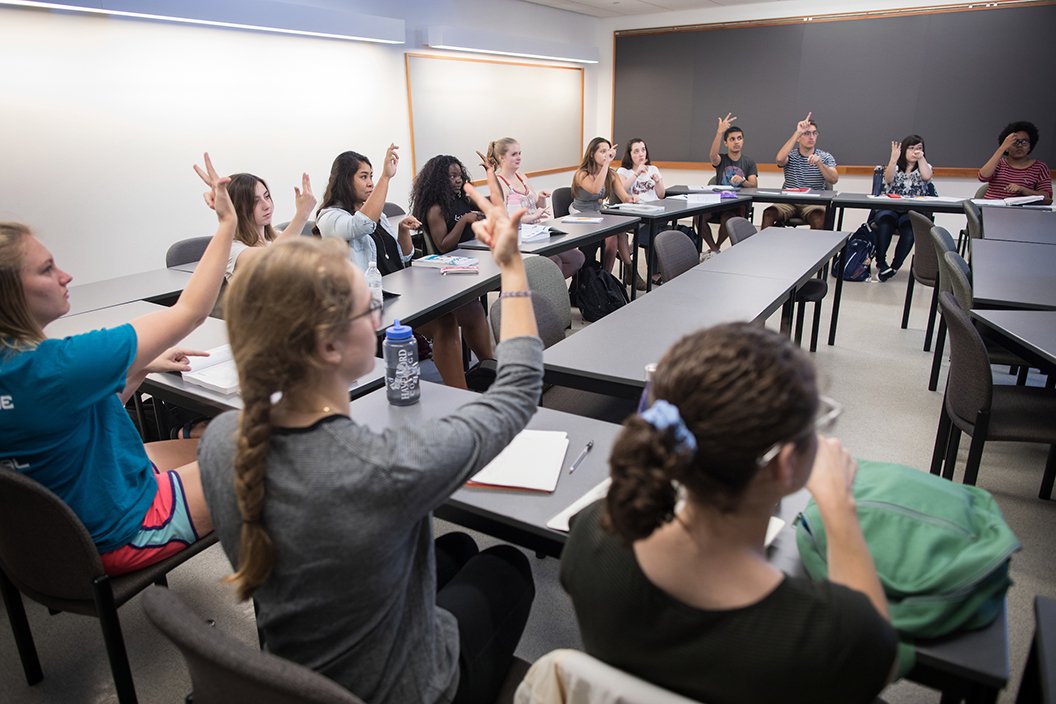American Sign Language Now (Officially) Satisfies Foreign Language Requirement

“Speech does not equal language,” says Donna Jo Napoli, professor of linguistics and social justice. “One is a modality, the other a cognitive faculty. And, oh my, how beautifully and variably this cognitive faculty can be realized.”
Students can now officially take American Sign Language (ASL) at Swarthmore to satisfy the foreign language requirement.
The Swarthmore Curriculum Committee recently approved the change, with the support of the Provost’s Office and the Linguistics and Modern Languages departments. Students can take American Sign Language I and American Sign Language II over two semesters to meet the requirement.
That’s been the “silent practice” at the College for nearly 30 years, with students taking an introductory ASL course at Swarthmore before a follow-up course at UPenn, says Donna Jo Napoli, professor of linguistics and social justice. But now it can all be done at Swarthmore.
“We've done the right thing in an official and public way,” says Napoli, who along with colleagues from the Psychology Department pushed for the policy change last year, after a student inquired about fulfilling the foreign language requirement with ASL at Swarthmore.
“Speech does not equal language,” she adds. “One is a modality, the other a cognitive faculty. And, oh my, how beautifully and variably this cognitive faculty can be realized.”
Among those celebrating the new policy is Rose Palmieri ’24, an honors theater major with a minor in linguistics that is focused on ASL, who fell in love with the language after taking the intro course in her first year.
“My hope is that with the new development, more students will be motivated to take ASL, which will in turn motivate the school to add more classes and hopefully eventually give the language its own program,” says Palmieri, of Seattle, Wash.
The Linguistic Society of America declared sign languages “bona fide natural human languages, with all the expressive and cognitive powers of spoken languages” in the 1990s, says Napoli. Pennsylvania has long allowed ASL to satisfy its high schools’ foreign language requirement, but many colleges and universities across the U.S. have been slow to follow suit.
ASL courses at Swarthmore, taught by instructor Melanie Drolsbaugh, are now offered through Linguistics. But Napoli hopes they eventually will be offered through a language department — both because ASL is a language, and so students will know it’s an option to fulfill their foreign language requirement.
Palmieri, too, hopes for ASL to move onto equal footing with the other languages Swarthmore offers. And that one day Swarthmore students could build out a curriculum with the language.
“So many students have told me how much they love the ASL classes we already have,” she says, “and [instructor Drolsbaugh] is one of my favorite teachers here.
“I would love for Swarthmore to recognize that,” she adds, “and keep expanding the possibilities for students studying ASL.”


